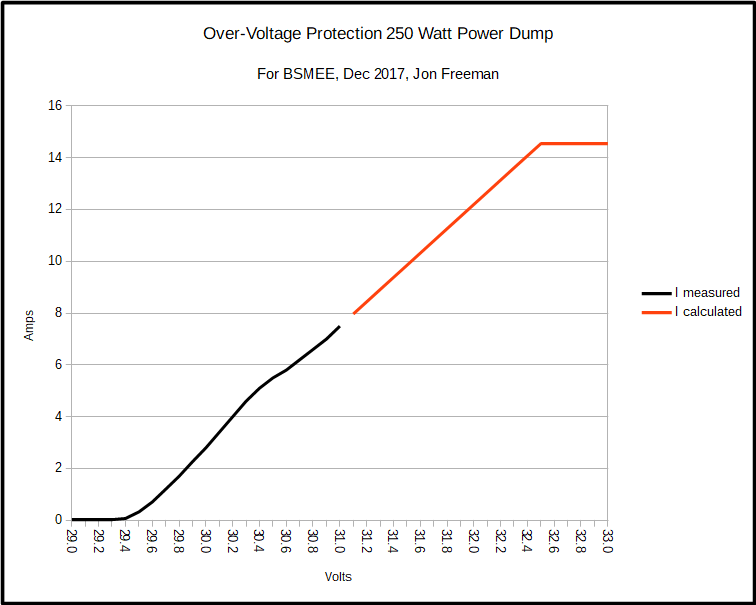In a battery powered locomotive, a common thought is that electrical power regenerated during braking can be put back into the batteries. This is true to an extent, but often the power regenerated is too great, there is a limit to how fast you can charge batteries. Trying to put too much back too quickly can cause the system voltage to rise well above nominal battery voltage, particularly so when the batteries are nearly fully charged. Without some means of detecting and limiting over-voltage, damage is likely.
In a battery-less petrol electric design such as 'The Brutalist', some means of absorbing regenerated power is essential to keep DC link voltage within safe limits. An electronic 'Power Dump' has been designed and included. Some similar system is a worthwhile safety feature for battery powered designs also.

Schematic for the Power Dump is here (opens in new window).
At low voltages, the power dump draws negligible power, just enough to bias V1, a precision voltage reference.
A fraction of input voltage is compared to reference, as this rises a point is reached where op-amp U2 begins to bias mosfets Q1-Qn into linear conduction region. R2-R6 help equalise current share between mosfets.
As voltage rises further, the mosfets are biased to conduct more heavily to the limit where each mosfet sinks a current of around 2 Amp (with component values shown). Component values (R7, R18) are chosen in this case to cause over-voltage protection to start kicking in at about 54 Volt, and to apply max load at about 58 Volt. Each mosfet will be dissipating around 100W max. The mosfet part was copied another four times, one 'master' board driving itself and four 'slaves'. This gives a power dumping capacity of 2.5kW spread between 25 mosfets as fitted to this petrol electric loco.
You may wonder why not use wirewound resistors instead of mosfets. Simple. Mosfets are a lot cheaper !
Unit for Bristol SMEE
A Power Dump module has been produced to be fitted to one of the petrol-electric locomotives owned by Bristol Society of Model and Experimental Engineers.
The main difference between the Bristol locos and those of Jon's design is the inclusion of batteries. The petrol engine drives an alternator, which keeps the lead-acid battery voltage somewhere near nominal, this is the system voltage. These are 24V systems.
The Power Dump is easily tailored to different system voltages, a few component value changes are all that's needed. A spreadsheet (right click, save, open using Excel, Calc etc) makes this easy.
